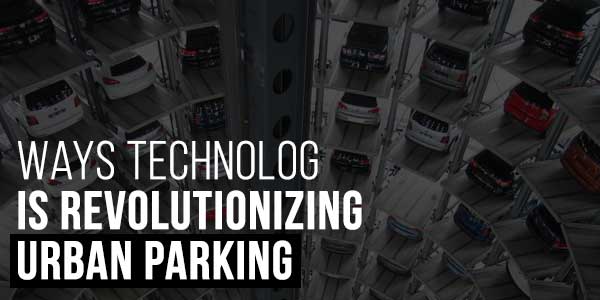
As our urban landscape becomes more congested, finding a parking spot can often feel like an Olympic sport. Fortunately, technology is stepping in to streamline this process, turning the chore of parking into a breeze.
For all the tech enthusiasts out there, this article will uncover five innovative ways technology is reshaping urban parking. From smart sensors to blockchain, we’ll dive into the digital innovations that make city parking smarter, more efficient, and more eco-friendly. Let’s start!
Table of Contents
Smart Parking Apps:
Gone are the days of circling the block in search of an elusive parking spot. Smart parking apps are putting the power back in the hands of drivers by providing real-time data on available spaces, sometimes even before you leave your home. They’re your best bet for a stress-free parking experience in a crowded city. Smart parking apps utilize the following:
- By harnessing the power of GPS, these apps can locate where you are and direct you to the nearest available parking spot.
- Some apps incorporate crowdsourced data to indicate areas where parking is scarce.
- Advanced algorithms predict the availability of spots at various times, helping users plan and avoid frustration.
Autonomous Valet Parking:
The rise of autonomous technology isn’t limited to just the streets. Autonomous valet parking allows you to step out of your car and let technology take the wheel, figuratively speaking. This innovative solution not only saves time but also reduces the space needed for parking. It quickly eliminates the need for human drivers to open doors and exit vehicles. Here is how it works:
- Vehicles are equipped with special sensors and software that allows them to navigate parking lots autonomously.
- Once you drop off your car, the valet service is engaged through a mobile app or vehicle dashboard interface.
- Cars are then whisked away and parked by the system, carefully avoiding obstacles along the way.
Contactless Payments:
Who carries change these days? Enter contactless payments. Instead of fumbling for coins or queuing at a pay station, drivers can pay for parking with a simple tap or swipe. This mode of payment is not only convenient for the user; it helps cities manage parking efficiently without the headache of cash-based systems. But where do you exactly find contactless payment systems?
- Connected to parking meters or apps that recognize when a vehicle enters and exits a space.
- Equipped with NFC (near-field communication) technology for quick, easy transactions.
- Often integrated with parking management software systems, which offer detailed billing and seamless user experiences.
Smart Parking Meters:
Remember when parking meters were just coin-operated boxes? No longer. Smart parking meters are taking over, offering multiple payment options, and even serving as hotspots for valuable city data. From a city management perspective, smart meters make it possible to set dynamic parking prices based on supply and demand. Here are some features of smart meters:
- Accept both coins and digital payments, offering flexibility to a wider pool of users.
- Are equipped with sensors that detect when a car park, helping authorities track usage patterns and optimize parking availability.
- Can be integrated with mobile apps and push notifications to alert drivers when their time is about to expire.

Blockchain for Parking Management:
Blockchain technology, known for its applications in finance and supply chain, is making its way into urban parking management. It promises increased transparency, efficiency, and security. While its integration in parking is in its infancy, it has the potential to innovate parking immensely in the future. Here’s what it does:
- Offers a decentralized ledger where parking data can be stored in a tamper-proof format, ensuring integrity and trust.
- Can support smart contracts that automatically execute agreements, such as payments for using a parking space, without the need for intermediaries.
- Allows for the integration of various payment methods, such as cryptocurrencies, making parking transactions accessible to a broader spectrum of tech-savvy users.
Electric Vehicle Charging Stations:
The transition to EVs (electric vehicles) is reshaping not only the automotive industry but also urban parking spheres. Introducing EV charging stations in parking areas is a forward-thinking move that aligns with sustainability goals and caters to the growing community of EV owners. Here are some key benefits of electric vehicle charging ports:
- Drivers can recharge their vehicles while they shop, work, or relax, easing concerns about the range and availability of charging infrastructure.
- By facilitating the use of EVs, cities can significantly reduce their carbon footprint, contributing to a cleaner and healthier urban environment.
- As an incentive, parking providers can charge a fee for charging services, creating new revenue models for businesses and municipalities.
Eco-Friendly Initiatives and Reduced Traffic:
The tech-led transformation of urban parking also comes with several additional perks. As its most beneficial contribution, smart parking systems are helping to reduce the environmental impact of urban centers by minimizing the fuel wasted by drivers looking for parking spots. It also shifts urban mobility towards electric and autonomous vehicles with more charging spaces.
Since it provides real-time data on parking availability, technology helps reduce traffic as drivers spend less time hunting for spots, alleviating urban congestion. Smart systems that dynamically price parking spaces also encourage more efficient use and turnover, reducing overcrowding in popular areas.
Tech in Transit:
The parking industry is at the cusp of a tech renaissance, where once-mundane meters and empty lots are becoming hubs of digital interaction. As we look to the future, it’s clear that technology’s role in urban parking will continue to evolve, introducing more sophisticated systems that cater to our growing urban mobility needs.
Looking ahead, potential advancements might include:
- Integration with smart city initiatives that aim to create a seamless experience for drivers, pedestrians, and public transportation users.
- Enhanced user experiences through augmented reality, where drivers can ‘see’ available parking spots overlaid on live video feeds of streets.
- The convergence of parking and shared mobility services, with tech facilitating rental services and ride-shares within parking structures.
As urban centers transform to accommodate the burgeoning population and shifting technological landscapes, the integration of smart parking solutions is no longer a luxury; it’s now a necessity. This digital evolution promises a future where circling the block for a parking spot is a thing of the past, replaced by an integrated parking experience that’s modern.

 About the Author:
About the Author:
















Be the first to write a comment.